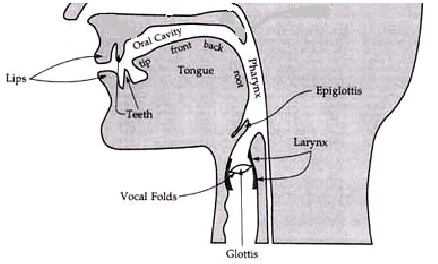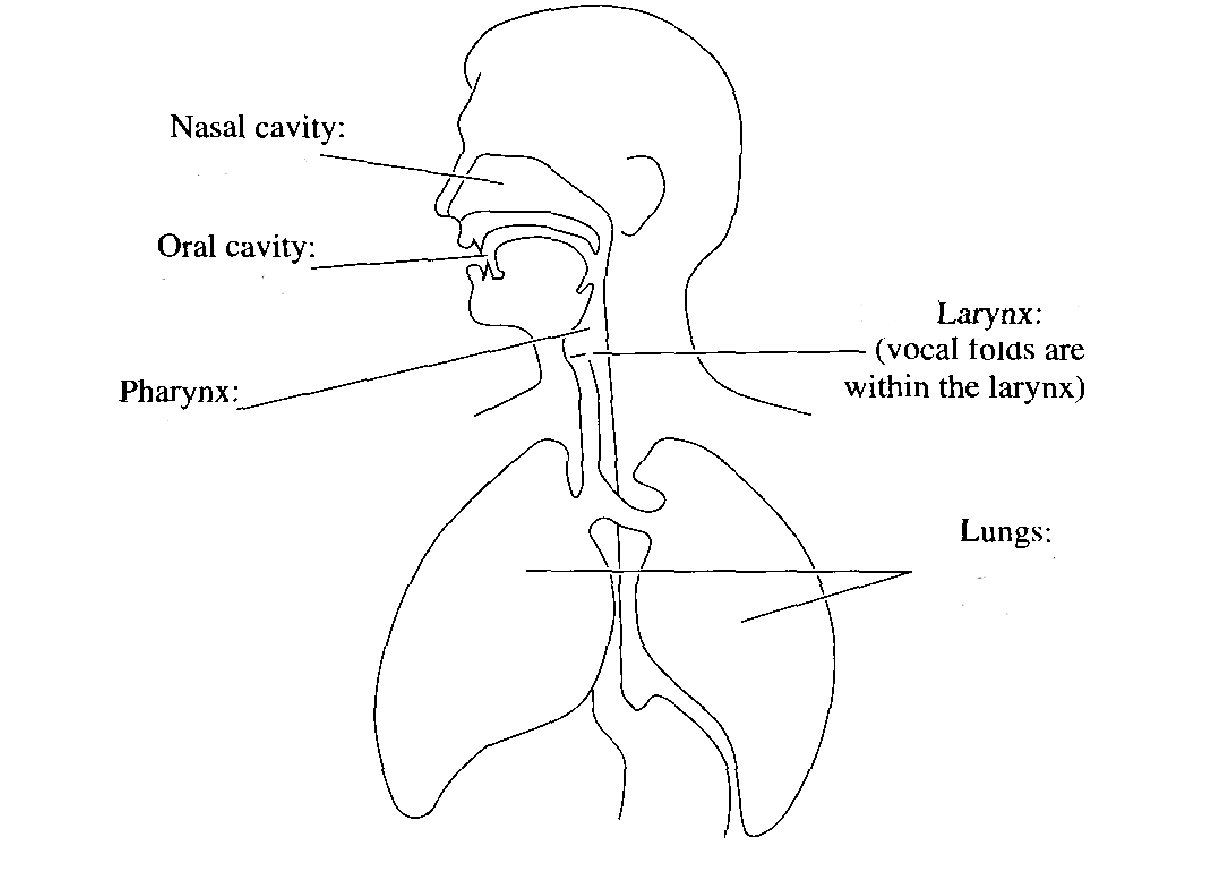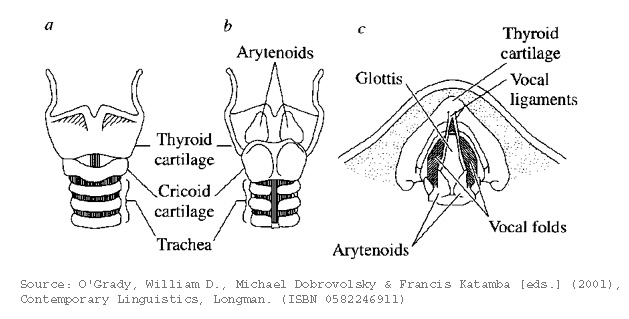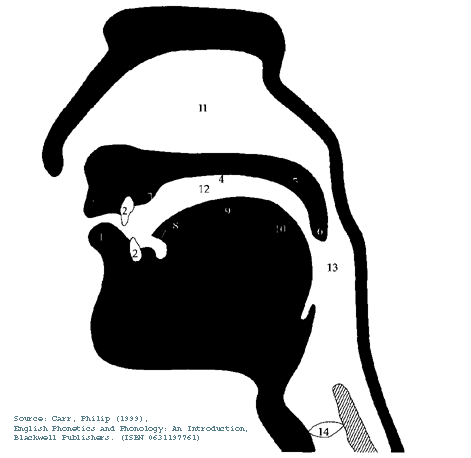Sound is produced when air is set in motion.
The speech production mechanism consists of:
– an air supply
provided by the lungs
– a sound source that sets the air in motion in ways specifically relevant to speech production
the larynx where a set of muscles called the vocal folds (or vocal cords) are located
– a set of filters that modifies the sound in various ways
organs above the larynx:
the pharynx (the tube of the throat between the oral cavity and the larynx)
the oral cavity
the nasal cavity.
These Passages are collectively known as the vocal tract.
Figure 1 – The Sound Producing System
The lungs:
In order to produce the majority of sounds in the world’s languages, air is taken into the lings and expelled during speech (A small number of sounds are made with air as it flows into the vocal tract).
A certain level of air pressure is needed keep the speech mechanism functioning steadily which is maintained by the action of various sets of muscles
The muscles are:
– the intercostals (the muscles between the ribs)
– the diaphragm (the large sheet of muscles that separates the chest cavity from the abdomen).
The larynx:
Air flowing out of the lungs up the trachea (windpipe) passes through a box-like structure made of cartilage and muscle – the larynx (commonly known as the voice box or Adam’s apple).
The main portion of the larynx is formed by the thyroid cartilage, which rests on the ring-shaped cricoid cartilage.
Fine sheets of muscle flare from the inner sides of the larynx, forming the paired vocal folds (vocal cords).
The vocal folds are each attached to the thyroid cartilage at the front and to the arytenoids cartilage at the back.
The vocal cords can be pulled apart or drawn closer together, especially at their back or posterior ends, where each is attached to one of two small cartilages – the arytenoids.
As the air passes through the spaces between the vocal folds, which is called the glottis, different glottal states are produced.
Figure 2 – The larynx
The air passages that make up the vocal tract are often divided into three main parts:
– the oral tract
– the pharynx
– the nasal tract.
The parts of the vocal tract that can be used to form sounds are called articulators.
The articulators that form the lower surface of the vocal tract often move to towards those that form the upper surface.
Figure 3 – The Articulators or Organs of Speech
1. Lips
2. Teeth
3. Alveolar Ridge
4. Hard Palate
5. Soft Palate (velum)
6. Uvula
7. Tip of the tongue
8. Blade of the tongue
9. Front of the tongue
10. Back of the tongue
11. Nasal cavity
12. Oral cavity
13. Pharynx
14. Larynx
The lower surface of the vocal tract consists primarily of the different parts of the tongue and the lower lips.
Figure 4 – The principal parts of the lower surface of the vocal tract

The tip and blade of the tongue are the most mobile parts.
Behind the blade is what is known technically as the front of the tongue ( actually the forward part of the tongue that lies underneath the hard palate when the tongue is at rest).
The centre of the tongue is the part of it that lies partly beneath the hard palate and partly beneath the soft palate when it is at rest.
The back of the tongue is beneath the soft palate, and the root which is opposite the back wall of the pharynx.
The epiglottis is attached to the lower part of the root of the tongue.




i just want to say i am very greateful fo the information i am getting here,i don’t know where i would be without this,so thank you..
god bless you for such a good content